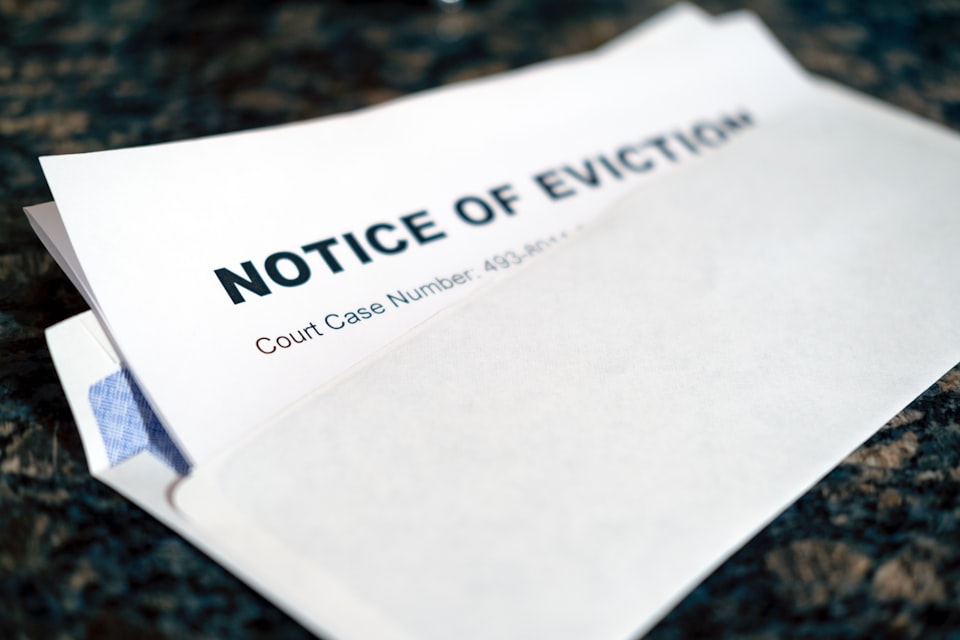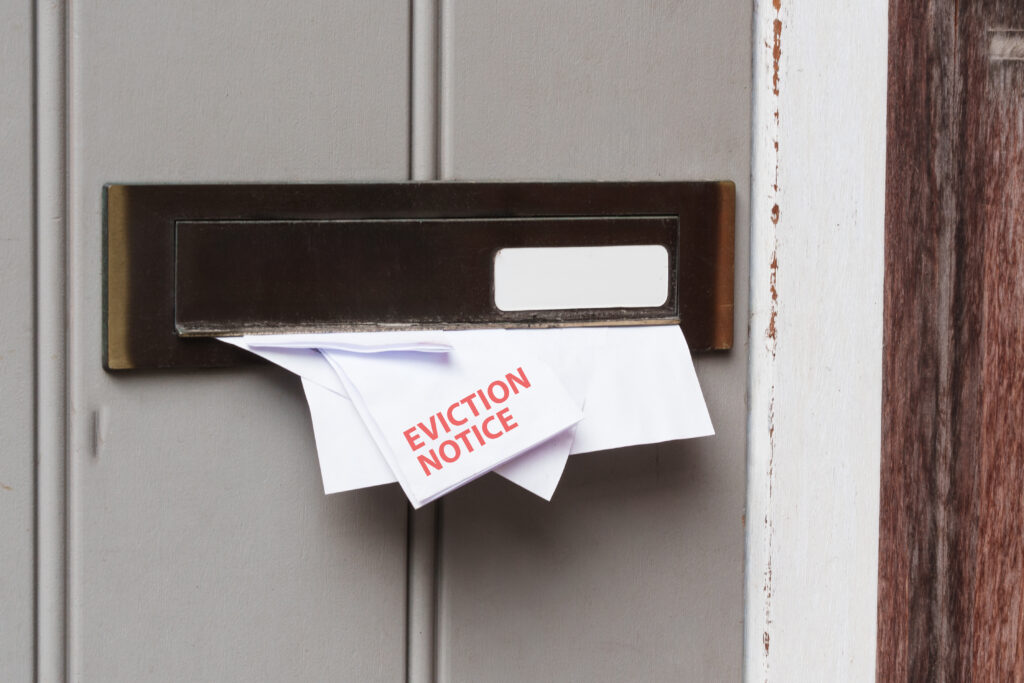For Indiana landlords, navigating the eviction process in Indiana might feel like a never-ending journey. With significant legislative changes set to take effect in 2025, staying informed is more than just good practice; it is critical for compliance and property protection.
This guide by LeaseRunner walks you through everything, from current eviction rules to notices, court filings, and how to avoid costly mistakes.
2025 Indiana Eviction Law Updates
The eviction process in Indiana is subject to continuing legislative changes, and landlords should be aware of numerous significant changes in 2025. These changes affect everything from a tenant's history record to the prompt removal of unauthorized inhabitants and the management of abandoned property.

Eviction Record Sealing Reform (SEA 142 / P.L. 128)
The eviction record Sealing Reform is one of the most significant reforms to the eviction process in Indiana for tenants. Senate Enrolled Act 142 (Public Law 128-2025) took effect on July 1, 2025. This change protects tenants' rights by prohibiting unfair housing discrimination based on dismissed or resolved eviction filings.
Key provisions include:
- Automatic Sealing: Courts are now required to seal eviction records in certain scenarios automatically. It is when the case is dismissed, a judgment is entered in favor of the tenant, or a judgment against the tenant is overturned on appeal. This is a major shift, as previously, tenants often had to petition the court for sealing.
- Expanded Eligibility: The law clarifies that tenants who have satisfied any money judgment related to the eviction can petition for sealing. Furthermore, cases with final orders where no money judgment was entered may be sealed after seven years.
Landlords need to understand that sealed records will not be accessible during routine tenant screening processes. This means landlords may have less access to historical eviction information for some applicants, emphasizing the importance of thorough vetting through other means.
Squatter Removal Updates (SEA 157 / P.L. 191)
Indiana has introduced faster remedies for removing unauthorized occupants, often referred to as squatters. Under SEA 157, property owners can now request expedited court intervention to remove individuals unlawfully occupying their rental property without a lease or legal right to be there.
Highlights of SEA 157 include:
- Definition of “Squatter": For the first time, Indiana law provides a clear legal definition of a squatter: an individual who occupies property without a rental agreement, owner permission, or any other legal interest.
- Expedited Removal: Property owners can now execute an affidavit attesting to the unauthorized occupancy. Upon receipt of such an affidavit, law enforcement agencies are generally required to dispatch officers to remove the squatter within 48 hours. This bypasses the often lengthy court procedure of a traditional unlawful detainer lawsuit.
- Adverse Possession Changes: The law also eliminates new adverse possession claims filed after June 30, 2025, further solidifying landlord rights against long-term unauthorized occupation.
Property Holding Period Update (HEA 1079 / P.L. 154)
HEA 1079 modifies the timeframe landlords must hold a tenant's abandoned property after an eviction or departure. This streamlines the process for landlords to manage unclaimed items.
- Shortened Holding Period: Under the new law, if a tenant does not claim their property within 45 days after receiving the required notice, a warehouseman or storage facility may sell the property.
- Notice Requirements Reminder: Landlords must still adhere to proper notice requirements regarding abandoned property to avoid potential legal issues, even with the shorter holding period.
Legal Reasons to Evict a Tenant in Indiana
For a landlord to lawfully initiate the eviction process in Indiana, there must be a legitimate, legally recognized reason. Indiana eviction laws are designed to protect both landlord rights and tenant protections, meaning arbitrary evictions are not permitted.

1. Nonpayment of Rent
In Indiana, there's typically no state-mandated grace period for rent. Rent is technically late the day after it's due, unless your specific rental agreement states otherwise. To initiate the eviction process in Indiana for nonpayment, a landlord must typically issue a 10-Day Notice to Pay Rent or Quit.
The tenant has 10 days to pay the full amount of the overdue rent payment or vacate the rental property. If the tenant fails to comply within this timeframe, the landlord can then file an unlawful detainer lawsuit with the Court. Before signing a lease, landlords can minimize risk by running tenant eviction checks to identify applicants with a history of non-payment or prior evictions.
2. Lease Violations
Beyond just nonpayment of rent, a tenant's breach of any other term outlined in the lease agreement can also be grounds for eviction. These Lease Violations can cover a wide range of issues, including:
- Unauthorized Occupants or Pets: Having individuals or animals living on the property not listed or allowed in the lease.
- Property Damage: Significant damage to the rental property beyond normal wear and tear.
- Health and Safety Violations: Actions that create hazards or violate local housing and health codes.
- Noise Disturbances: Repeatedly disturbing the peace and quiet enjoyment of neighbors.
- Illegal Alterations: Making unauthorized changes to the property structure or fixtures.
For most lease violations (other than non-payment or serious criminal activity), Indiana law generally requires the landlord to provide the tenant with a “Notice to Cure or Quit." This notice must specify the violation and give the tenant a “reasonable amount of time" to fix or "cure" the breach. The exact timeframe for "reasonable" isn't always defined by statute and can depend on the nature of the violation.
3. Criminal Activity
Engaging in or permitting serious criminal activity on the rental property allows a landlord to accelerate the eviction process in Indiana. This can include activities such as illegal drug use or dealing, prostitution, or other offenses that pose a threat to the safety and well-being of others or the property itself.
In such cases, landlords may be able to issue an “Unconditional Quit Notice". This means the tenant has no opportunity to “cure" the violation and must vacate the premises immediately or within a very short timeframe. I can be 45 days for some severe violations, or even less in emergency circumstances.
4. End of Lease or No-Lease Tenants (“No-Fault" Evictions)
A landlord may initiate an eviction when a lease term expires or for month-to-month tenancies. In Indiana, month-to-month tenancies occur when the original lease has expired, but the tenant continues to pay rent and the landlord accepts it. These are often referred to as "no-fault" evictions because they don't stem from a tenant's wrongdoing.
- Fixed-Term Lease Expiration: If a fixed-term lease reaches its end date and the landlord chooses not to renew it, the tenant is expected to vacate. If they remain, they become a "holdover tenant," and the landlord can begin the eviction process in Indiana to regain possession of the rental property. No "cure" notice is required in this scenario, just proper notice of non-renewal or termination.
- Month-to-Month Tenancies: For month-to-month agreements, either the landlord or tenant can typically terminate the tenancy with proper written notice, usually 30 days. If the landlord wishes to end the tenancy, they must provide this notice. If the tenant does not vacate by the specified date, the landlord can then file an unlawful detainer action.
Serving a Valid Eviction Notice in Indiana
Serving a proper eviction notice is the critical first step in the eviction process in Indiana. Any misstep here can significantly delay your ability to regain possession of your rental property and may even lead to your case being dismissed in Court.

Select the right notice type
Indiana law specifies different notice periods and requirements for various situations:
- 10-Day Notice to Pay Rent or Quit: It informs the tenant that they have 10 days to pay the overdue rent in full or vacate the premises. If the rent is paid within this period, the eviction process in Indiana cannot proceed on these grounds.
- Notice to Cure or Quit (Reasonable Time): For Lease Violations other than non-payment, a landlord must provide a notice giving the tenant a reasonable time to correct the violation. Indiana law does not specify an exact number of days, so it should be a fair period for the tenant to remedy the breach.
- Unconditional Quit Notice (45-Day for Criminal Activity): In severe cases, the landlord may issue an Unconditional Quit Notice. For certain serious violations like illegal drug activity, Indiana law may require a 45-day notice to vacate, giving the tenant no option to cure the violation.
Include required details
Missing or incorrect details in the eviction notice can invalidate the notice and force the landlord to restart the Court Procedure. Essential details include:
- The full name(s) of the tenant(s).
- The address of the rental property.
- The specific reason for the eviction.
- The date the notice is issued.
- The deadline by which the tenant must comply.
- A clear statement that if the tenant fails to comply, the landlord will initiate an unlawful detainer lawsuit to regain possession.
- The landlord's signature.
It is advisable to use official forms or templates provided by legal resources or local courts to ensure all necessary information is included.
Serve notice properly
Proper service of the eviction notice is just as crucial as its content. Indiana law outlines acceptable methods for delivering these notices to the tenant. Acceptable methods generally include:
- Personal Delivery: Handing the notice directly to the tenant.
- Leaving at the Premises: If the tenant is not present, the notice can be left at their usual place of abode with a person of suitable age and discretion residing there.
- Posting: If personal delivery or leaving with another occupant isn't possible, the notice can be posted in a conspicuous place on the rental property, such as the front door.
- Certified Mail (with Return Receipt): While not always explicitly required by Indiana statute for all notice types, sending the notice via certified mail with a return receipt requested provides excellent proof of delivery.
Always keep a copy of the notice for your records, along with proof of service (e.g., a signed acknowledgment from the tenant, a postal receipt, or a photograph of the posted notice). This documentation will be vital if the case proceeds to Court.
Never use self-help tactics
It is paramount for all landlords to understand that tenant protections in Indiana strictly prohibit “self-help" eviction tactics. This means a landlord cannot:
- Change the locks on the rental property.
- Remove the tenant's personal belongings.
- Shut off utilities (water, electricity, gas, heat).
- Threaten or intimidate the tenant
Step-by-Step Eviction Process in Indiana
For landlords, understanding each phase of the Court Procedure is essential to ensure the eviction is lawful and to protect your landlord rights.

Step 1: Serve the Eviction Notice
The very first formal action a landlord must take is to serve the appropriate eviction notice. This written notice informs the tenant of the violation and provides a specific timeframe for them to remedy the issue or vacate the premises. The type of notice and the required notice period depend entirely on the grounds for eviction.
Step 2: File a Complaint with the Court
If the tenant fails to comply with the eviction notice within the specified timeframe, the landlord can then proceed to file an eviction lawsuit with the appropriate Indiana Court. To file a complaint, the landlord will need to:
- Complete the necessary forms: These usually include a "Complaint for Possession of Real Estate" or a similar document.
- Provide supporting documentation: This includes a copy of the lease agreement, the eviction notice served to the tenant, and any other relevant evidence.
- Pay the filing fees: Court filing fees vary by county and must be paid at the time of filing.
Step 3: Serve Court Documents to the Tenant
Once the complaint is filed, the Court will issue a summons. This summons, along with a copy of the filed complaint, must be formally "served" to the tenant. In Indiana, court documents (summons and complaint) are typically served by a sheriff's deputy or a certified private process server. Landlords or their attorneys are generally not permitted to serve these documents themselves.
- Methods of Service: Common methods include personal delivery to the tenant, leaving the documents at the tenant's usual place of abode with a person of suitable age and discretion, or posting the documents on the rental property.
- Proof of Service: The server will file a "Return of Service" with the Court, documenting how and when the tenant was served.
Step 4: Attend the Court Hearing
Both the landlord (or their legal representative) and the tenant are expected to attend the scheduled Court hearing. This is the opportunity for both parties to present their case to the judge.
- Landlord's Burden of Proof: The landlord bears the burden of proving the legal grounds for eviction. This involves presenting all gathered evidence.
- Tenant's Defense: The tenant has the right to present their defense, which might include arguing that the landlord did not follow proper legal procedures, that the alleged violation did not occur, etc.
- Default Judgment: If the tenant fails to appear at the hearing, the judge will likely issue a default Judgment in favor of the landlord, allowing the eviction to proceed without further delay.
Step 5: Get a Writ of Restitution
If the Court rules in favor of the landlord and grants a Judgment for possession, the tenant will typically be given a short period (often 48 to 72 hours) to vacate the property voluntarily. If the tenant does not move out by this deadline, the landlord must then obtain a "Writ of Restitution" (or Writ of Possession).
This Writ is a Court order that authorizes law enforcement (the Sheriff) to physically remove the tenant and their belongings from the rental property.
Step 6: Sheriff Regains Possession
Once the landlord obtains the Writ of Restitution, they must deliver it to the local Sheriff's office for execution. The Sheriff's office will then schedule a time to execute the Writ. If the tenant leaves personal property behind, the landlord must follow specific Indiana laws regarding abandoned property (as updated by HEA 1079 / P.L. 154 in 2025).
Indiana Eviction Timeline and Costs
The eviction process in Indiana can vary in duration and cost depending on the specifics of each case. For landlords, understanding these estimates is crucial for financial planning and managing expectations.
Key Documents to Prepare for Eviction in Indiana
Successfully navigating the eviction process in Indiana requires meticulous preparation, especially when it comes to gathering the necessary documentation. These documents are crucial for proving your case in court and ensuring that all legal procedures are followed correctly.

1. Lease agreement
The lease agreement legally binding contract, outlines the terms and conditions of the tenancy. It serves as fundamental evidence of the agreed-upon terms and any alleged violations by the tenant. Ensure you have a complete and signed copy of the most recent lease agreement.
2. Payment history
For evictions based on non-payment of rent, a detailed payment history is indispensable. This includes records of all rent payments made and missed, dates of payments, amounts, and any outstanding balances, including late fees. Bank statements, ledger printouts, or receipts for cash payments can all serve as strong evidence.
Find Out: Indiana Security Deposit Laws: A Comprehensive Guide for Landlords and Tenants
3. All notices (with proof of delivery)
Proper notice is a critical step in the Indiana eviction process. Depending on the reason for eviction, different types of notices are required. It is essential to have copies of all notices served to the tenant, along with proof of delivery. This proof can include certified mail receipts, a signed acknowledgment from the tenant, or an affidavit of service from someone who personally delivered the notice.
4. Photos/videos of violations
If the eviction is due to lease violations (e.g., property damage, unauthorized pets, cleanliness issues), photographic or video evidence is highly effective. Date-stamped photos or videos clearly showing the violations can be powerful visual proof in court.
5. Written communications or complaints
Maintain a comprehensive record of all written communications with the tenant. This includes emails, text messages, letters, and any formal complaints filed. These communications can provide context to the situation, demonstrate attempts to resolve issues before resorting to eviction, and highlight the tenant's responses or lack thereof.
Landlord Tips to Avoid Eviction Mistakes in Indiana
The eviction process in Indiana can be complex and fraught with potential pitfalls for landlords. To ensure a smooth and legally compliant eviction, landlords should be proactive and informed.

1. Meticulous Record-Keeping
As highlighted in the previous section, documentation is critical. Landlords must maintain comprehensive and organized records of everything related to the tenancy. This includes:
- Lease Agreements: Always have a signed, current copy of the lease.
- Payment Ledgers: Keep detailed records of all rent payments, including dates, amounts, and any late fees applied.
- Notices: Retain copies of all notices served (e.g., 10-day notice to pay rent, notice to cure or quit), along with proof of delivery (e.g., certified mail receipts, photos of posted notices).
- Communications: Document all written communication with tenants, including emails, text messages, and letters regarding lease violations, repair requests, or other issues.
- Property Condition: Maintain records of the property's condition before and after tenancy, including move-in/move-out checklists, photos, and videos.
2. Adhere Strictly to Notice Requirements
Using the wrong notice, providing insufficient notice, or improperly serving the notice are common mistakes that can invalidate your eviction attempt.
- Understand Notice Types: Know when to use a 10-day notice versus a notice to cure or quit.
- Calculate Timelines Correctly: Ensure you provide the full, legally required notice period.
- Proper Service: Follow the legal methods for serving notices, and always obtain proof of delivery.
3. Avoid “Self-Help" Evictions
Engaging in self-help evictions can result in severe penalties, including fines, legal action by the tenant, and immediate dismissal of your eviction case. Only a sheriff, acting on a court-issued Writ of Possession, can legally remove a tenant.
4. Seek Legal Counsel When Unsure
If you are ever unsure about the proper legal procedures, it is always advisable to seek legal aid from an attorney specializing in landlord-tenant law. An experienced attorney can provide invaluable guidance, ensure compliance with all laws, and represent your interests in court. It significantly increases the likelihood of a successful eviction outcome while protecting you from costly mistakes.
Conclusion
Understanding the eviction process in Indiana is essential for both landlords and tenants. Each stage—from serving notices to appearing in court - requires strict adherence to legal procedures. Landlords must ensure they act within the law to protect their property and rights, while tenants should be aware of their tenant rights and seek legal aid if necessary.
FAQs
1. How long does the eviction process in Indiana usually take?
The full process can take anywhere from 3 to 6 weeks, depending on the reason for eviction, court availability, and how quickly documents are served and processed.
2. Can a landlord evict a tenant without going to court?
No. Indiana landlords must go through the court system and follow legal procedures to remove a tenant lawfully.
3. What are valid reasons for eviction in Indiana?
Common legal reasons include nonpayment of rent, lease violations, criminal activity, or the end of a lease term. Each requires proper notice and documentation.
4. What happens if a tenant refuses to leave after an eviction judgment?
The landlord must request a Writ of Restitution, and the sheriff will enforce the order by physically removing the tenant if necessary.
5. Can tenants get help if they’re being evicted?
Yes. Tenants have the right to seek legal aid, attend the court hearing, and present a defense. Organizations across Indiana provide free or low-cost assistance.



